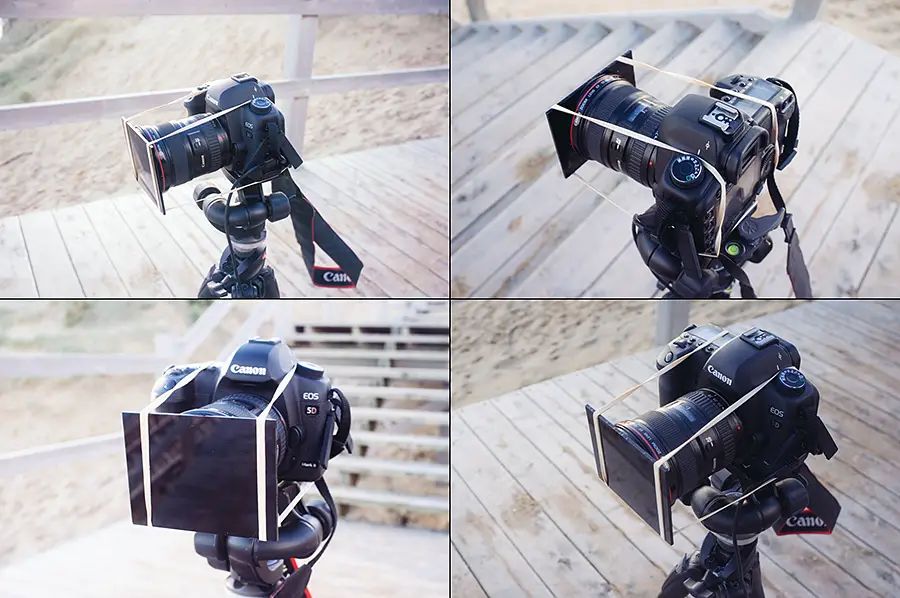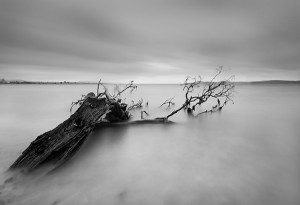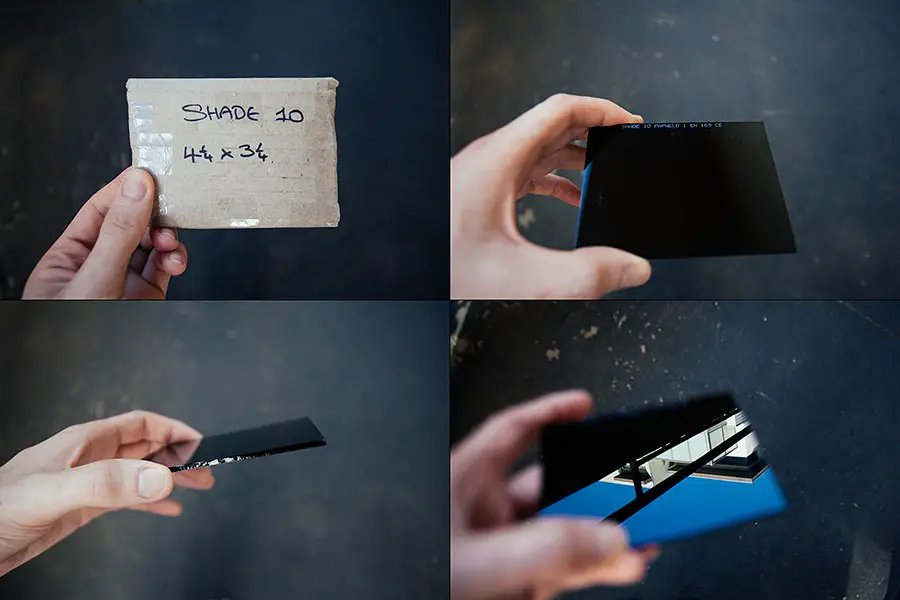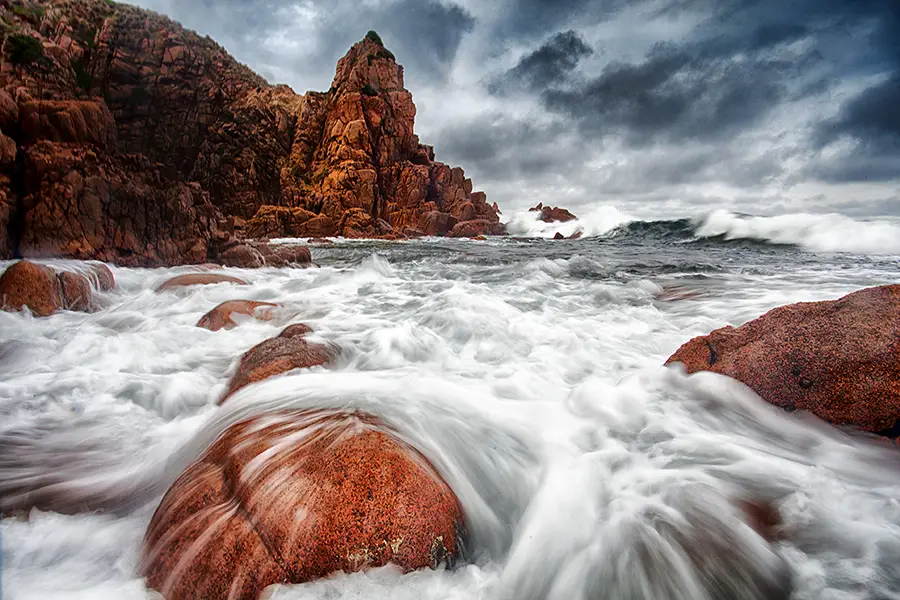
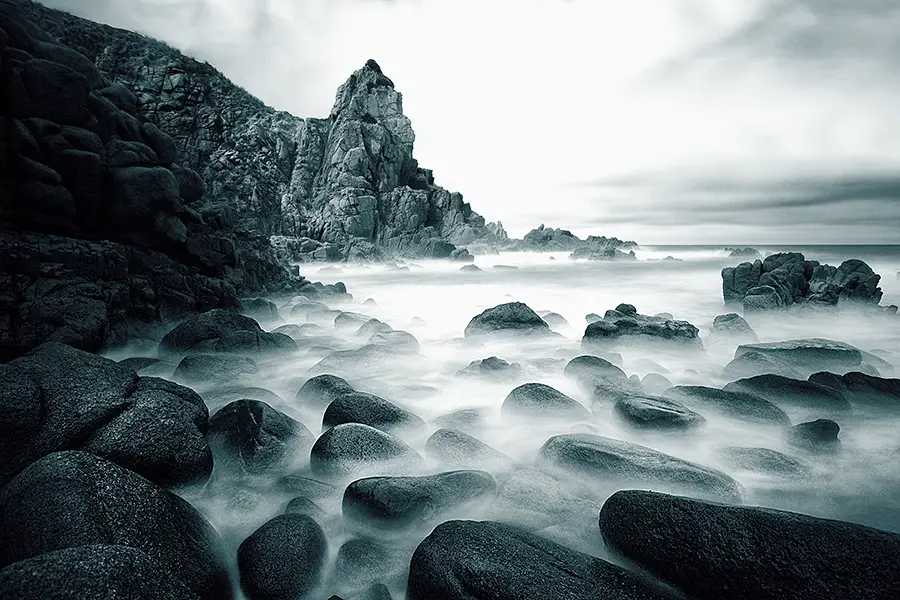
Look I won’t lie, I’m a light snob and when Ricardo Da Cunha told me at 7am that we weren’t heading down to the Yarra Valley to capture some nice fog lit forrests but instead down to Phillip Island I did raise my eye brows slightly. One of the things I’ve learnt over time is that for certain scenes, there’s not much point pulling your camera out unless it’s at certain times of the day. For waterfalls I generally find they’re best when the weather is overcast and miserable while for seascapes I prefer to shoot around sunset/sunrise to capture the golden hour light and colours that unfold. So with this in mind I smiled and thought I could at least resurrect the situation with some day time long exposure shots but that didn’t quite turn out to be. More on that later.
On our way down the idea was to catch up with Andrew Sharpe who has only just recently purchased a Phase One setup. I’d not seen one in the flesh and while not tempted myself, it’s a beautiful camera and I’m envious. Personally speaking, I’m a too rough with my camera’s and also like to get a little too close to the action like the time I lost my camera to a waterfall… So the idea of walking around with a camera worth upwards of $20,000+ alone would scare me. Hell, sitting on the train with a bag of camera gear can be nerve wracking enough. But either way, it was a beautiful camera and the results it puts out are stunning.

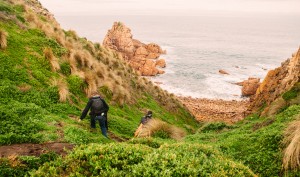
I’ve been down to the Pinnacles at Cape Woolamai only the once and it’s one of my favourite places for seascape photography in the state. There’s something about walking down the beach for a km or two and finally making your way to a set of stairs then walking further before you begin to descend down into the Pinnacles. A private little bay where the waves are endless and wild. It’s one of those places that never disappoints and would be hard to take a bad photograph. A must visit for any travelling photographer who is interested in seascape photography.
We made our way down to Cape Woolamai and the sky was overcast with not much going on. I quickly learnt that I had left my B+W 110 10 stop filter at home. The filter that I thought would allow me to at least capture a couple of frames using day time long exposure effects and resurrect the trip. Bit of a dampener but I quickly remembered that I had a Hoya R72 (infrared filter also great for long exposures) and some welding glass in my camera bag. I’ve blogged about using welding glass in the past with this post about using welding glass as a DIY neutral density filter which explains what welding glass to purchase and how to remove the colour cast from your shots.
With lighting conditions quite diffused from the overhead cloud this allowed me to capture the movement of water through some short long exposures using my Cokin Z-Pro filters like the shot below which involved the use of a .9 Cokin graduated neutral density filter. Some more information on the different types of filters out there and how to use them can be read on a recently posted blog post in case you are interested in further information.

We didn’t hang around too long and ended up making our way back to Melbourne by lunch time. Would I shoot seascapes again during the day? Probably not but it’s a good slap in the face for me to be less of a light snob and get out there in conditions that are less ideal and make the most of what you are given. As opposed to only shooting locations when the conditions align.
Although that being said I find this seems to be one of the biggest mistakes I see for beginner photographers – not shooting according to the conditions and expecting to go out in the middle of the day and walk out with nice photos. If you are starting out I’d recommend learning what conditions work best for certain conditions and shooting around this time. So if you’re keen on shooting a favourite beach, find out if it is sunset or sunrise facing and get down there at that time as opposed to the middle of the day where you will be battling strong light or dull skies. Just don’t become a light snob like me 😉
Thanks for reading,
– Alex
